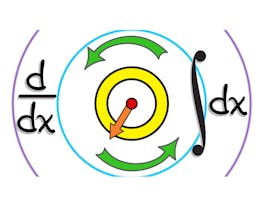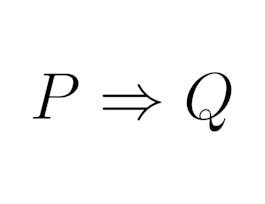This course helps to build the foundational material to use mathematics as a tool to model, understand, and interpret the world around us. This is done through studying functions, their properties, and applications to data analysis. Concepts of precalculus provide the set of tools for the beginning student to begin their scientific career, preparing them for future science and calculus courses. This course is designed for all students, not just those interested in further mathematics courses. Students interested in the natural sciences, computer sciences, psychology, sociology, or similar will genuinely benefit from this introductory course, applying the skills learned to their discipline to analyze and interpret their subject material. Students will be presented with not only new ideas, but also new applications of an old subject. Real-life data, exercise sets, and regular assessments help to motivate and reinforce the content in this course, leading to learning and mastery.



Precalculus: Periodic Functions
This course is part of Precalculus through Data and Modelling Specialization

Instructor: Joseph W. Cutrone, PhD
Top Instructor
Sponsored by BrightStar Care
4,648 already enrolled
(103 reviews)
Recommended experience
What you'll learn
Model data with both single and multivariable functions
Visualize and analyze data using different technologies.
Understand properties of different types of functions to apply them accordingly to model different situations.
Perform vector operations, such as addition, scalar multiplication, dot product, and cross product, to analyze geometry in space.
Skills you'll gain
Details to know

Add to your LinkedIn profile
6 assignments
See how employees at top companies are mastering in-demand skills

Build your subject-matter expertise
- Learn new concepts from industry experts
- Gain a foundational understanding of a subject or tool
- Develop job-relevant skills with hands-on projects
- Earn a shareable career certificate


Earn a career certificate
Add this credential to your LinkedIn profile, resume, or CV
Share it on social media and in your performance review

There are 5 modules in this course
In this course, we expand our collection of functions which we can use to model by studying periodic functions. Periodic functions are functions whose graphs repeat themselves after a certain point. It is natural to study periodic functions as many natural phenomena are repetitive or cyclical: the motion of the planets in our solar system, days of the week, seasons, and the natural rhythm of the heart. Thus, the functions introduced in this course add considerably to our ability to model physical processes. In this module, we begin by learning methods of measuring angles.
What's included
2 videos1 reading1 assignment
Many common phenomena have oscillatory or periodic behavior. To model this behavior requires an understanding of functions that exhibit periodic behavior like sine, cosine, and tangent. These functions are introduced using right triangles in this module, which then lets us explore their algebraic relations.
What's included
2 videos1 reading1 assignment
Sine and cosine are now introduced using the unit circle, which is the circle centered at the origin with radius one. This definition of our key periodic functions extends the definition originally introduced with right triangles.
What's included
2 videos1 reading1 assignment
The most basic periodic functions, sine and cosine, were defined for all real numbers. We now study their quotients and reciprocals. However, care must be taken to ensure we do not divide by zero. In this module, we will complete our catalog of periodic functions
What's included
2 videos1 reading1 assignment
In an effort to simplify the work involving our periodic functions, we introduce common identities. This dramatically increases their usefulness in applications. This module will emphasize the development of a small core of identities that are continually needed and can be used to determine a much larger collection. While the number of identities is small in this module, an understanding of these and how to derive others from them is essential for success as you continue your studies.
What's included
2 videos2 readings2 assignments
Instructor

Offered by
Why people choose Coursera for their career




Learner reviews
103 reviews
- 5 stars
77.88%
- 4 stars
17.30%
- 3 stars
3.84%
- 2 stars
0.96%
- 1 star
0%
Showing 3 of 103
Reviewed on Nov 20, 2021
Absolutely loved this course. i recommend it to every beginner
Reviewed on Jan 6, 2021
The course is challenging. I learned a lot about trigonometric functions and their behavior. I can now understand periodic ODEs better now...
Reviewed on Apr 10, 2021
Excellent course. Trigonometric concepts that, in previous courses, had been intimidating, confusing and tedious became dramatically less so.
Recommended if you're interested in Math and Logic

Johns Hopkins University

ISAE-SUPAERO

University of Pennsylvania

University of Amsterdam

Open new doors with Coursera Plus
Unlimited access to 10,000+ world-class courses, hands-on projects, and job-ready certificate programs - all included in your subscription
Advance your career with an online degree
Earn a degree from world-class universities - 100% online
Join over 3,400 global companies that choose Coursera for Business
Upskill your employees to excel in the digital economy


